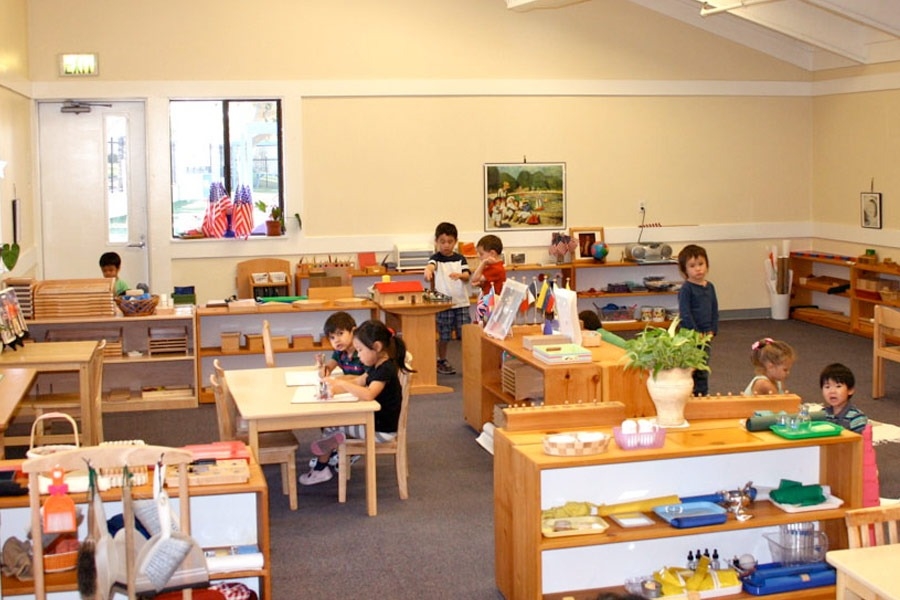
Montessori: What It Is And What It is Not
31 Jan 2018 | 5 min Read
Kuhoo Gupta (The K Junction)
Author | 101 Articles
Are you looking for an alternative preschool for your child? Are you overwhelmed with the Montessori buzzword these days and are seeing a bunch of preschools claiming to be Montessori? Are you unable to decide which one actually is because you are clueless about what Montessori truly is? Then I have got your back! Read on to know what Montessori is and what to look out for in a preschool that claims to be authentic Montessori.
What Is Montessori In A Nutshell?
- Montessori schools follow the teachings of Dr. Maria Montessori who was a medical practitioner and a philosopher. Her progressive teachings and views, written more than 50 years ago, are still relevant.

- Montessori allows children to explore in something known as a ‘prepared environment’ based on their developmental needs and interests. It is a child-centric way of learning. The philosophy believes that the environment is one of the best teachers.
- Montessori is a way of life and not just an education philosophy. It nurtures the body, mind and spirit of the child. Montessori is the education of the whole child including physical, emotional, mental, spiritual and social ways of being.
- Montessori emphasises on children becoming independent and self motivated. They are free to choose their work in the classroom, so essentially they build their own pathway of learning from the available choice of materials. There is freedom to move around in the classroom because Dr. Maria realized that a child learns best when s/he is free to move her/his body.

- Dr. Maria Montessori realized that the role of the teacher is not to teach the child directly what she wants but to provide the child with the relevant materials for exploration, guide the child on using the material when the child asks for and then sit back and watch the child use the material, interfering only when the child asks for help, unless the child is abusing the material.

- A typical kindergarten classroom is divided into 5 major areas of learning – practical life, sensorial, math, language and culture. These areas house specific Montessori didactic self- correcting materials to teach various concepts to the child.



- Use of natural materials is encouraged like wood instead of plastic.
- The child works on the materials at her/his own pace individually.
- Rewards and punishments are rarely used in a Montessori classroom.
How To Check If A Preschool Is REALLY Montessori?
Dr. Maria Montessori never filed any patents for her methodology and as a result these days many schools are claiming to be Montessori, but in reality, they are a mixture of different pedagogies.
Look out for these things in a school to decide if it is really an authentic Montessori kindergarten (preschool)
- Is it a mixed age classroom? Montessori advocated that children between the ages of 3 and 6 work in the same classroom. The mixed age groups allow for many wonderful things to take place in the classroom including peer teaching, accommodating each child’s developmental and academic needs, and learning appropriate social interactions, just to name a few.

- Is learning self-directed or the timetable and what materials are to be used are decided by the teacher beforehand? A Montessori child decides himself which material to use and when. There is freedom within limits.
- Are different areas of learning visible in the classroom – practical life, sensorial, math, language, culture? Do you see specific Montessori didactic materials in the classroom?
- Are children using hands-on learning mechanisms to learn concepts or are they reading it on the blackboard and mugging things up (rote learning)? For example, in a Montessori classroom, children get to hold the moveable letters in their hand to experience the letters, they get to trace the letters on sandpaper letters and then on the sand instead of copying letters in their notebooks mindlessly.

- Does the classroom have child-sized and child-centric materials put at the level of the child and not in high shelves where a child cannot grab that material independently? A Montessori classroom is a prepared environment where a child is encouraged to carry on tasks independently and everything is designed for the child – size of materials, height at which they are kept and ease of accessing them.
- Are there fixed seats for children or are they allowed to move around in the classroom as per their interest? Montessori advocates freedom of movement for better learning.
- Not really stringent in Indian context but is the school affiliated/accredited by a national or international Montessori organization? And are the teachers trained from accredited institutions?
If you have any further questions, feel free to ask your questions in Comments!
Source of banner image: thechildrenshousebahrain
Also read: What should you know about ‘Montessori’ learning for your child?
Explore the entire collection of articles: Early Learning & Brain Development
A


Related Topics for you
Suggestions offered by doctors on BabyChakra are of advisory nature i.e., for educational and informational purposes only. Content posted on, created for, or compiled by BabyChakra is not intended or designed to replace your doctor's independent judgment about any symptom, condition, or the appropriateness or risks of a procedure or treatment for a given person.
